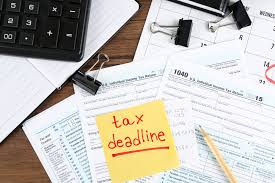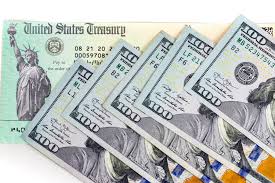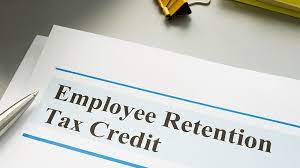
Learn how self-employed individuals can claim up to $32,200 under the Families First Coronavirus Response Act (FFCRA) or SETC tax credits for income lost due to COVID-related reasons. Understand the eligibility criteria, calculate the credit amounts, file the necessary forms, and avoid common mistakes. Discover how Tax Prep Advocates can assist you in maximizing your tax credits.
Introduction to Claiming the Self Employed Tax Credit (SETC) under the Families First Coronvirus Response Act (FFCRA)
Self-employed individuals faced financial challenges during the COVID-19 pandemic, but they can still benefit from tax credits for income lost due to COVID-related reasons. This guide provides valuable insights into claiming the self-employed COVID tax credits for 2020 and 2021. Discover the eligibility criteria, calculate the credit amounts, file the necessary forms, and avoid common mistakes. With the assistance of Tax Prep Advocates, you can navigate the process smoothly and maximize your tax credits.
Qualifying for the SETC as a Self-Employed Individual
While the employee retention tax credit (ERTC aka ERC) primarily benefits employers, self-employed individuals can also claim similar tax credits. To qualify, you must meet the following criteria:
- You Were Self-Employed: Being self-employed means working for yourself as a sole proprietor, independent contractor, freelancer, or business owner without employees. This status must apply to the tax years 2020 or 2021.
- You Would Be Eligible for Sick or Family Leave Pay if You Were Employed: You can claim self-employed COVID tax credits if you would have been eligible for sick leave or family leave pay as an employee. This includes situations where you were personally affected by COVID (illness, quarantine) or had to care for someone with COVID-related needs. Additionally, you may qualify if you had to care for a child due to school or daycare closures caused by COVID.
- You Have Records to Support Your Claims: Maintain records to substantiate your eligibility for the self-employed COVID tax credits. These records may include school closure notices, business revenue statements, doctor’s records, and any relevant documentation. While you don’t need to submit the records with your tax return, it’s essential to keep them in case of an IRS audit.
How to Claim the Self-Employed COVID Tax Credit (SETC)
To claim the self-employed COVID tax credits, follow these steps:
- Calculate the Daily Value of the COVID Tax Credit for Sick Leave: Determine your average daily pay as a self-employed individual. Divide your annual profit by 260 (assuming a five-day workweek) to obtain your daily rate. You can claim 100% of your average daily pay (up to $511) for the days you couldn’t work due to COVID or quarantine.
- Determine the Daily Value of the COVID Credit for Family Leave: For self-employed individuals who missed work to care for someone with COVID or a child affected by school or daycare closures, you can claim 67% of your daily rate. Multiply your daily rate by 0.67 to calculate this credit. The maximum credit per day is capped at $200.
- Figure Out How Many Days of Credits You Can Claim: You can claim up to 10 days’ worth of credits for personal COVID-related issues or assisting others. However, you cannot claim more than 10 days, even if you were unable to work for a longer duration. An exception applies if you needed to care for your child (under 18 or with a disability) due to school or daycare closures. In such cases, you can claim up to 50 days, with a maximum credit of $200 per day.
- Subtract Days Already Claimed: Ensure you don’t double-dip by subtracting any COVID sick leave or family leave already paid by an employer. Adjust the number of eligible days accordingly.
- File the Form to Claim the Credits: Use IRS Form 7202 (Credits for Sick Leave and Family Leave for Certain Self-Employed Individuals) to claim these COVID tax credits. Follow the instructions provided on the form to accurately calculate your self-employed COVID tax.
- Enjoy Your Reduced Tax Bill or Refund: These tax credits are fully refundable, meaning any excess credit amount will be refunded to you after covering your tax liability. For example, if you qualify for a $10,000 credit but only owe $4,000 in taxes, the IRS will issue a refund check for the remaining $6,000.
Mistakes to Avoid with the Self-Employed COVID Credit
To ensure a smooth application process and avoid common errors, keep the following tips in mind:
- Use the correct year’s version of IRS Form 7202.
- Carefully follow the form’s instructions to complete it accurately.
- Remember to calculate your average daily rate using either the current or previous year’s income.
- Be mindful of the deadline to amend your return if you have already filed.
- Maintain supporting documents to substantiate your claims in case of an IRS audit.
Get Help Applying for the COVID Self-Employed Tax Credit: Navigating the complexities of claiming the self-employed COVID tax credits can be challenging. Tax Prep Advocates is here to assist you in maximizing your tax credits and ensuring compliance with filing requirements. Whether you need to file unfiled returns, amend previously filed returns, or simply want expert guidance, our team is ready to help.
Conclusion
Self-employed individuals can benefit from the COVID tax credits for income lost due to COVID-related reasons. By understanding the eligibility criteria, calculating the credit amounts accurately, and filing the necessary forms, you can claim these valuable tax credits. Don’t miss out on this unique opportunity, find out how to maximize your self-employed COVID tax credits!






